Kagawa Prefecture, the gateway to Shikoku, is the smallest prefecture in Japan, but is a tourist destination full of highlights.
Above all, Shikoku’s best power spot “Kotohiragu”, which is said to “should go once in a lifetime”, is well-known by the nickname of “Konpira-san”.
It is the main shrine of Kotohira Shrine nationwide, and about 4 million worshipers visit every year.
The biggest feature of “Konpira-san” is the 785 stone steps from the entrance to the main shrine (1,368 steps to the back shrine).
Even those who are confident in their physical strength have a hard time, so we recommend climbing with familiar sneakers, easy-to-move clothes, and a free rental cane.
Some of you may start to hesitate to go, but don’t worry, there are art spots such as museums and cafes where you can take a break along the stone steps.
Let’s enjoy the historical scenery of the main shrine waiting at the end of the long stone steps and the sense of accomplishment that only those who have climbed up can achieve.
- “Kompira visit” is a longing of people in the Edo period
- Go through the “Daimon” to the sanctuary
- 五人百姓 “Five peasants” is specially allowed candy shop in the Miya
- Did the wrestler move it? ! Otorii
- “Omoteshoin” where you can see important cultural properties
- About 40 years to complete! Spectacular Asahisha
- Gohongu has been watching over Sanuki for over 1,000 years
- Enjoy the Omikuji and scenery after the visit
- Fun after worship, walk in Monzen-cho
- Summary
“Kompira visit” is a longing of people in the Edo period
It was during the Edo period that “Visit to Konpira” to Kinpira Shrine, which has long been a place of faith, spread throughout the country.
At that time, people were forbidden to travel, but this was not the case for worshiping to shrines and temples including Kintohira Shrine and Ise Shrine.
Since its founding, the main festival god, Omonosushi no Kami, is a god with a variety of virtues such as agricultural breeding, fishing voyages, medicine, and arts.
By the way, the name with a slightly different sound called “Konpyra” is said to be derived from the Sanskrit word “Kumbira” (which refers to the crocodile living in the Ganges river).
Go through the “Daimon” to the sanctuary
When you enter the main approach, there are souvenir shops and restaurants on both sides of the stone pavement. If you want to visit them, we recommend that you enjoy them after visiting shrine.
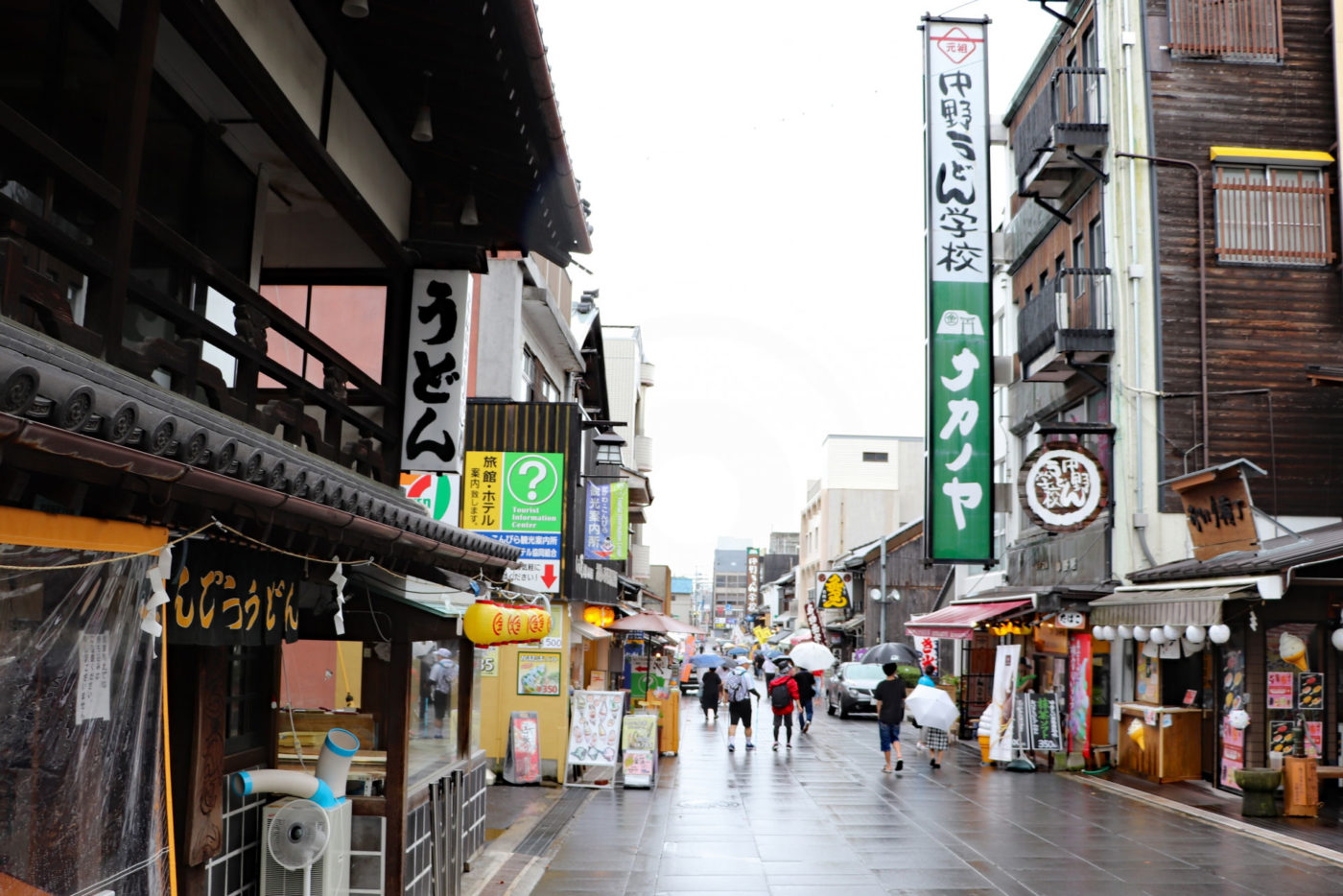
Omotesando
Stone steps will appear soon.
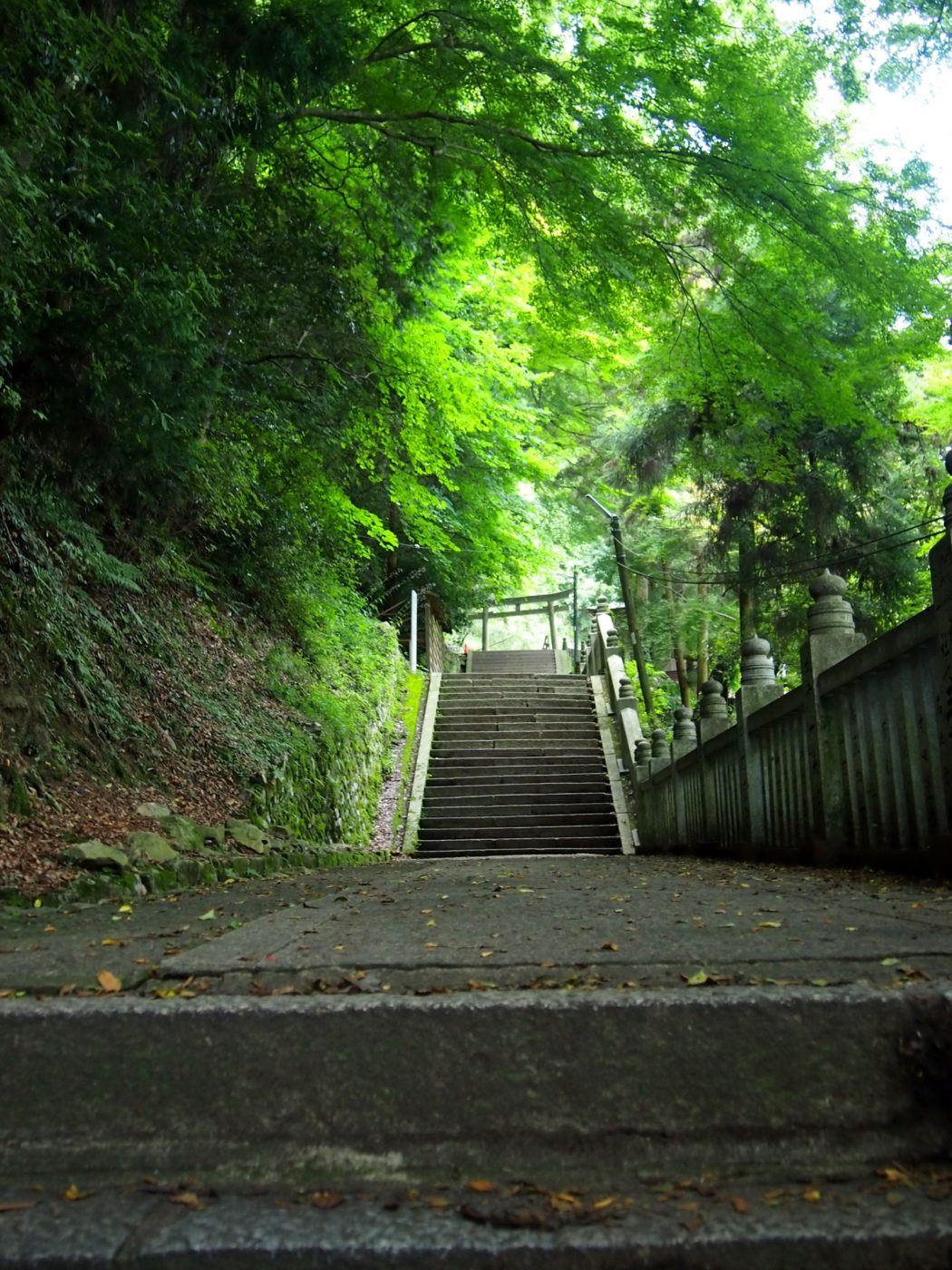
At the end of 365 steps, you will finally see Daimon, the gate that separates Monzen-cho from the precincts. With a double-layered main house and tiled roof, its powerful stance raises the feelings of worshipers at once.
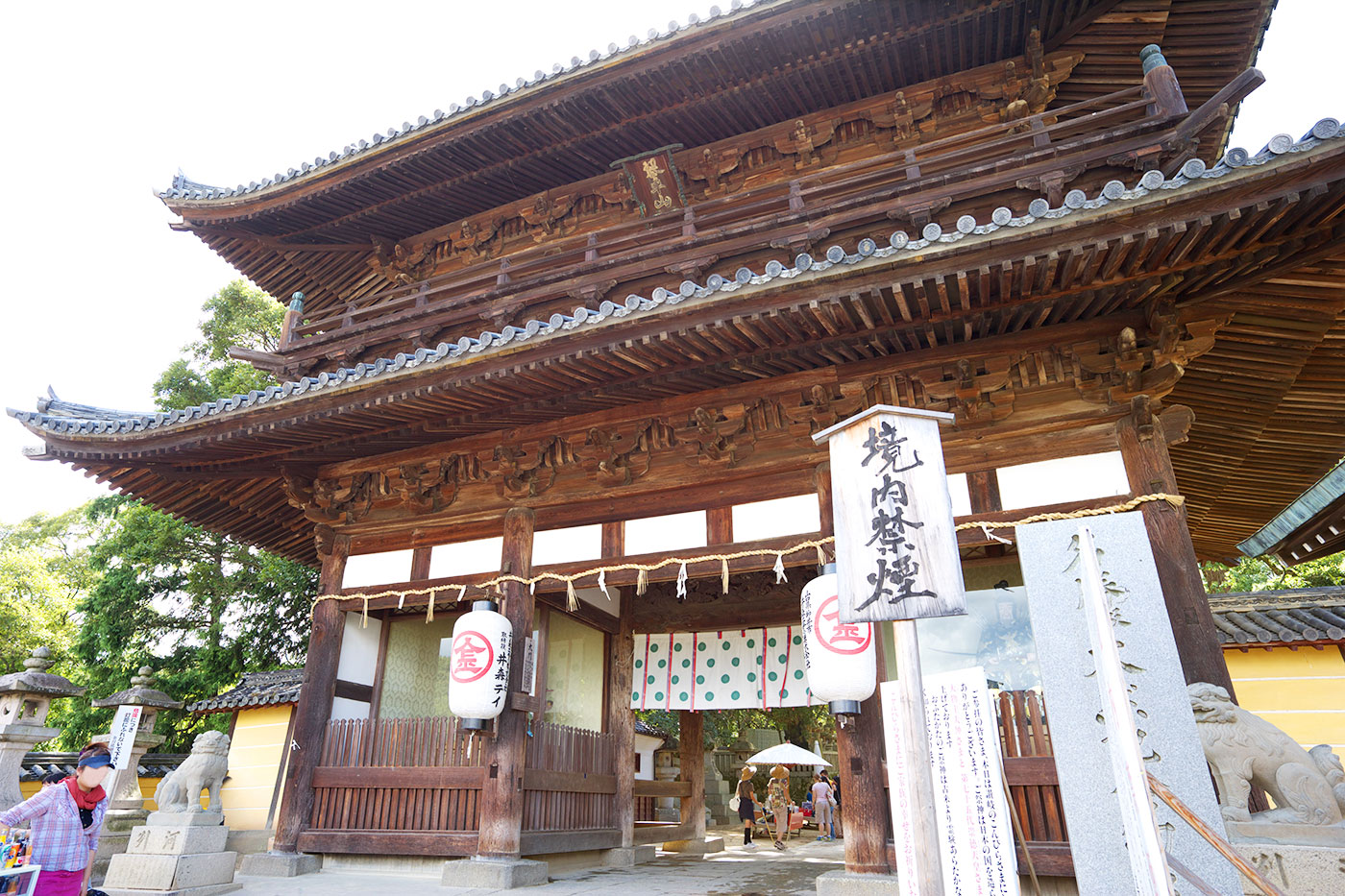
Daimon
It is said that Yorishiege Matsudaira, the brother of Mitsukuni Mito, donated in 1649.
If you turn around here, you will see the stone steps that have gone up until now, and you can see the Sanuki plains far away.
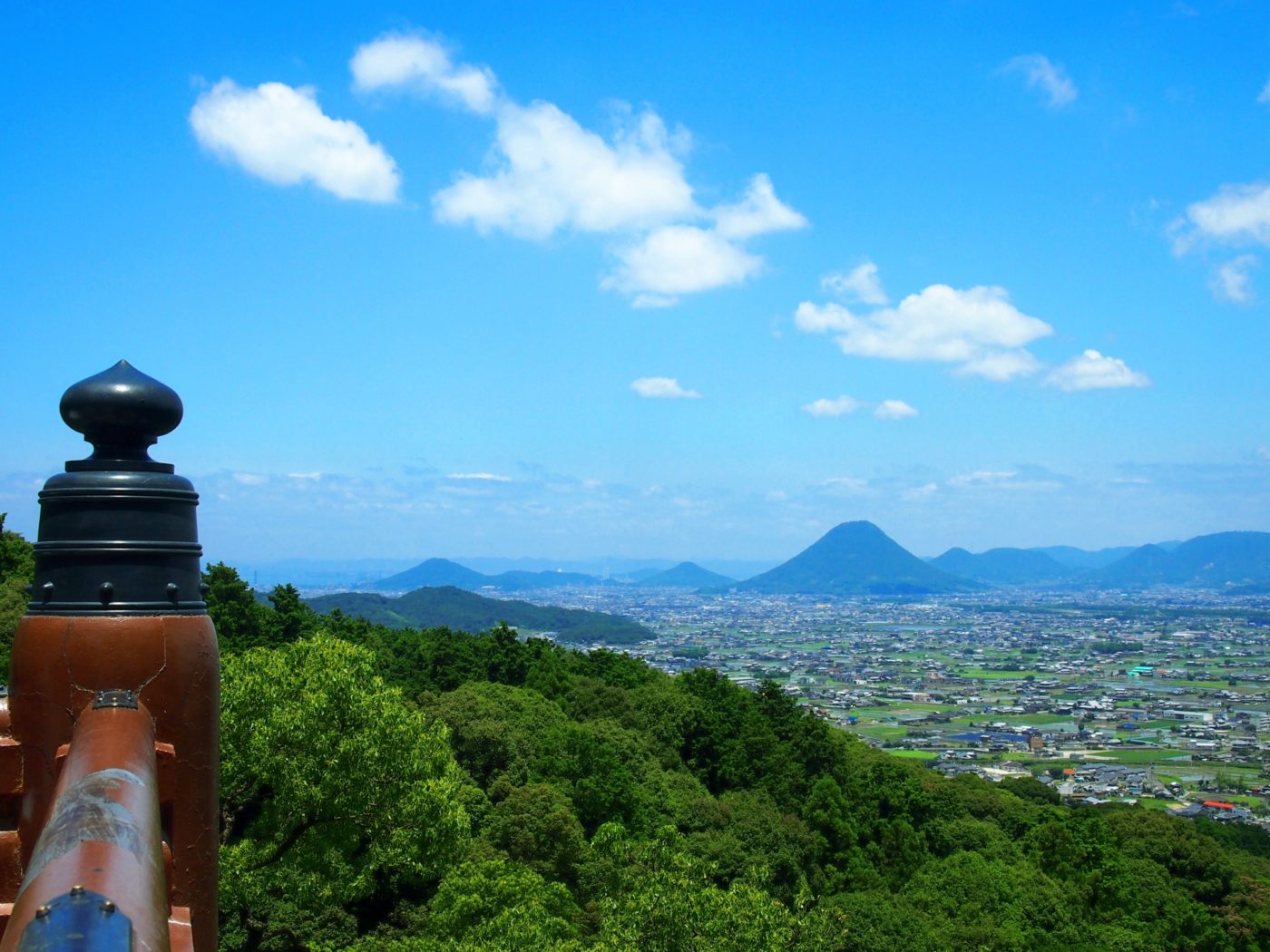
By the way, you can also use Kagoya (Human Power Transportation Service), so if you want to preserve even a little, you can try using it.
五人百姓 “Five peasants” is specially allowed candy shop in the Miya
You can see the people who opened their shops with umbrellas in the place just after passing Daimon. This is the long-established candy shop who is said to be the 五人百姓 “five people peasant” and is the only business in the precincts.
They sell only Kampira specialty, Kamiyoame. It’s a bekko candy made from sugar and water syrup, and it’s a handmade candy that has been handed down for about 800 years.
Let’s aim at Gohongu again while being healed by its simple sweetness.
Did the wrestler move it? ! Otorii
A gentle cobblestone road continues from Daimon for a while. Cherry blossoms are planted on both sides, and it is said that it will be a wonderful cherry blossom tunnel in spring.
A little to the right, you will find the oldest museum in Western Japan, the “Takaramono-kan”.
In there, more than 50 treasures from the Konpira Shrine are on display, and their modern architectural design, built in 1905, is highly regarded both domestically and internationally.
If you return to the approach and go further, you will see a torii gate with the sign “Shiawase-san, Konpira-san”. The word means “Happy Konpira-san”.
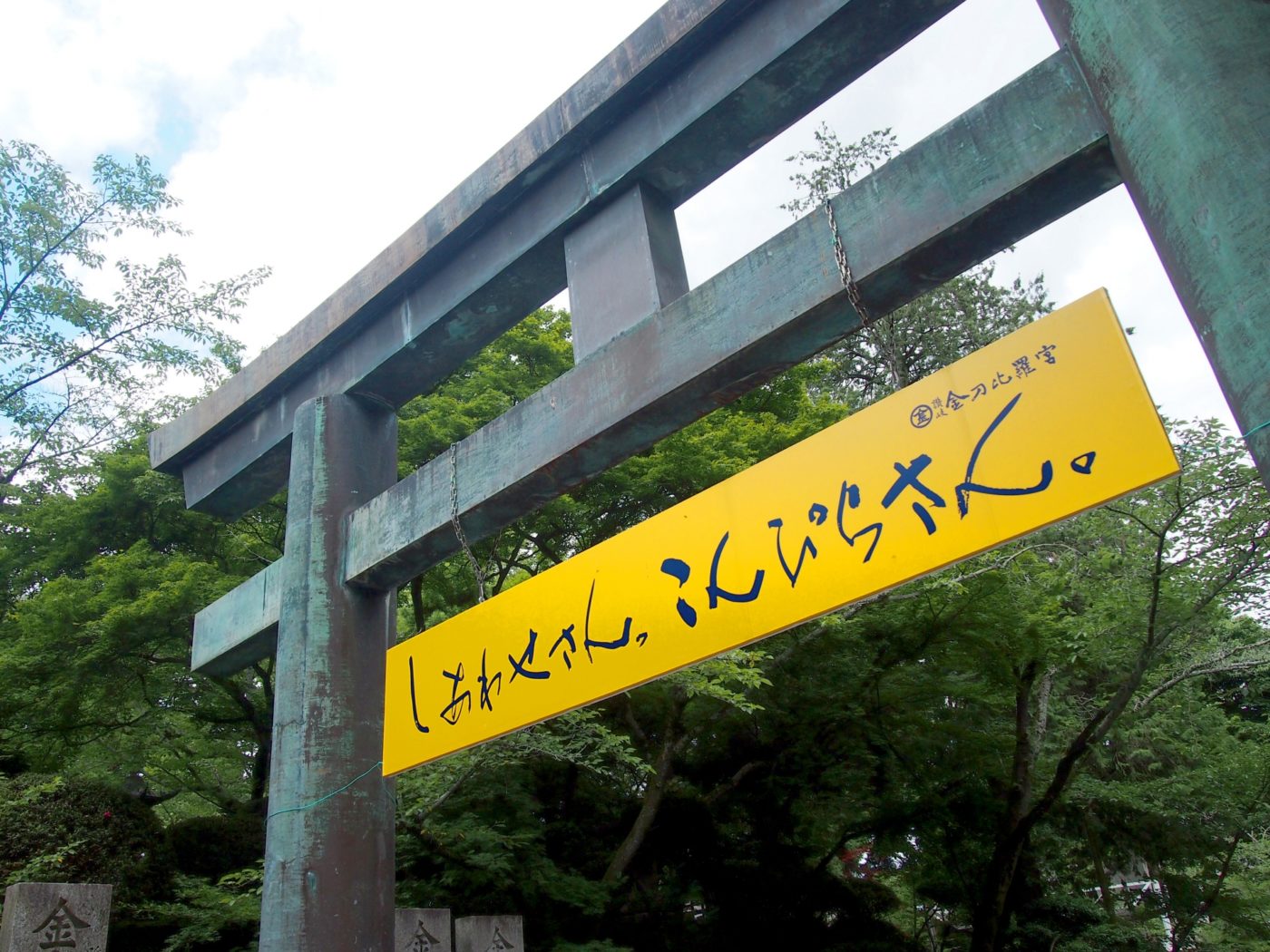
This is Otorii, which was carried by the sumo wrestlers in 1912 from the east side of the high lantern standing near Kotoden Kotohira Station. When you actually see the torii in front of you, you will be surprised, “Is this really carried by humans?”
“Omoteshoin” where you can see important cultural properties
From the torii, you will climb the stone steps again. The “Omoteshoin” is built right after you start climbing. You can see the barriers and lacquer paintings of the important cultural property, Maruyama Okyo.
Above all, okyo ’s masterpiece “Mizu nomi no Tora” drawn between the tigers is drawn in detail from the expression of the tiger to the fur, and is a must-see.
About 40 years to complete! Spectacular Asahisha
The stone steps will continue. As you go up the steep stone steps around the 500th step, you will find “Asahisha”, a magnificent shrine that is mistaken for Gohongu. Let’s visit after the main shrine.
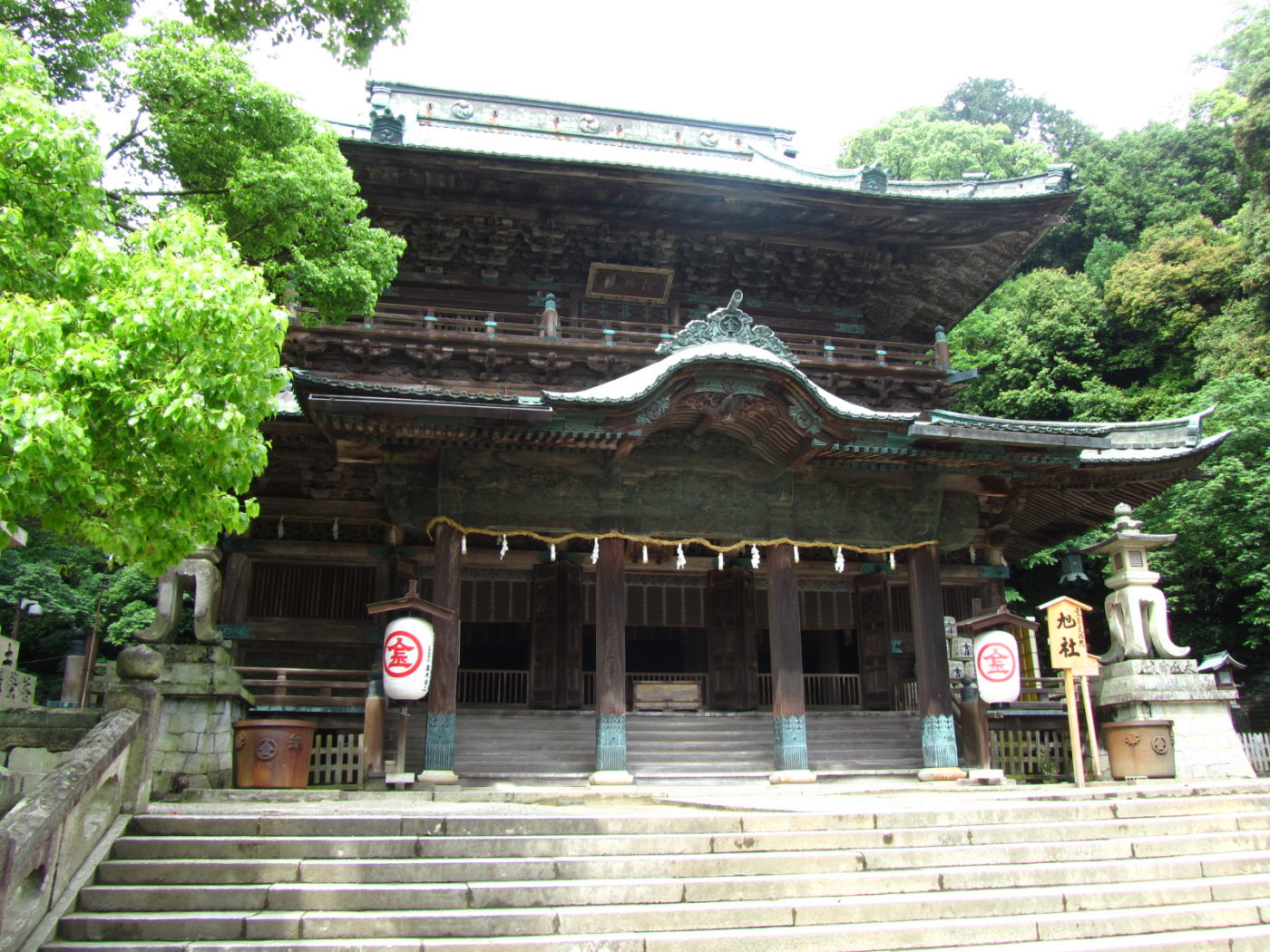
Asahisha is a building that was a gold temple during the time of the Konpira Gongen and is designated as an important cultural property of the country.
Exquisite sculptures such as cirrus clouds in the attic, birds and beasts between the pillars and doors are a must-see.
There is a water tank near the shrine, and it is said that if you drop a one-yen coin here and float it on the surface of the water, your wish will come true.
Gohongu has been watching over Sanuki for over 1,000 years
Going to the right side of Asahisha, you will face the last challenge. A most steep slope with 133 stone steps is waiting for you. Go up the stone steps step by step, and if you reach all 785 steps, you will see Gohongu.
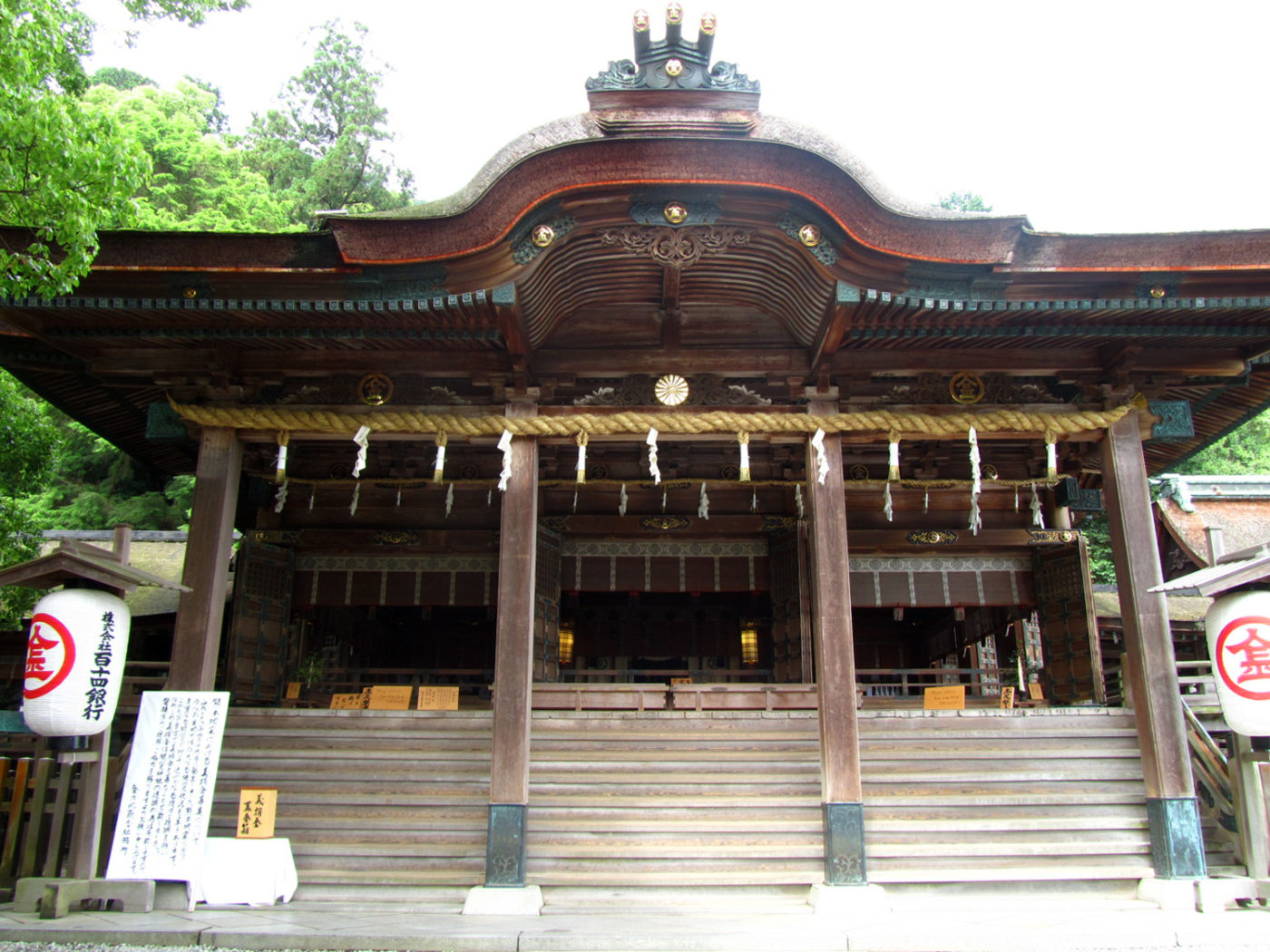
The main building, which dates back to the time before Taika’s renovation (645), is characterized by a strong appearance using cypress.
On the other hand, ornate wall paintings are drawn on the internal wallboard and ceiling.
It enshrines the Omononushino-Kami and Emperor Sotoku, and is said to have various benefits such as maritime protection, agriculture, breeding and medicine.
Enjoy the Omikuji and scenery after the visit
One of the things you can get at Gohongu Shrine is “Fortune Kompira Mikuji (100 yen)”. It is a Omikuji that is named after “Konpira dog”, who came on behalf of the master, with a Omikuji on the back of the statue of the dog. The bag contains a gold talisman in the shape of “Konpira dog” along with the Omikuji, and it may be beneficial if you put it in your wallet.
In addition, various amulets can be purchased at the office. “The happy yellow amulet ” that comes with a miniature kompira dog, and the colorful amulet with Genki-kun that is the character of Konpira shrine unique charms are likely to be memories of souvenirs.
The right hand side of Gohongu is an observation deck. The view from the height of 251m above sea level is superb. If the weather is good, you can see the Sanuki Fuji and Seto Bridge across the Sanuki Plain.
Actually, these are not all. There is still an “Okusha” in Konpira Shrine.
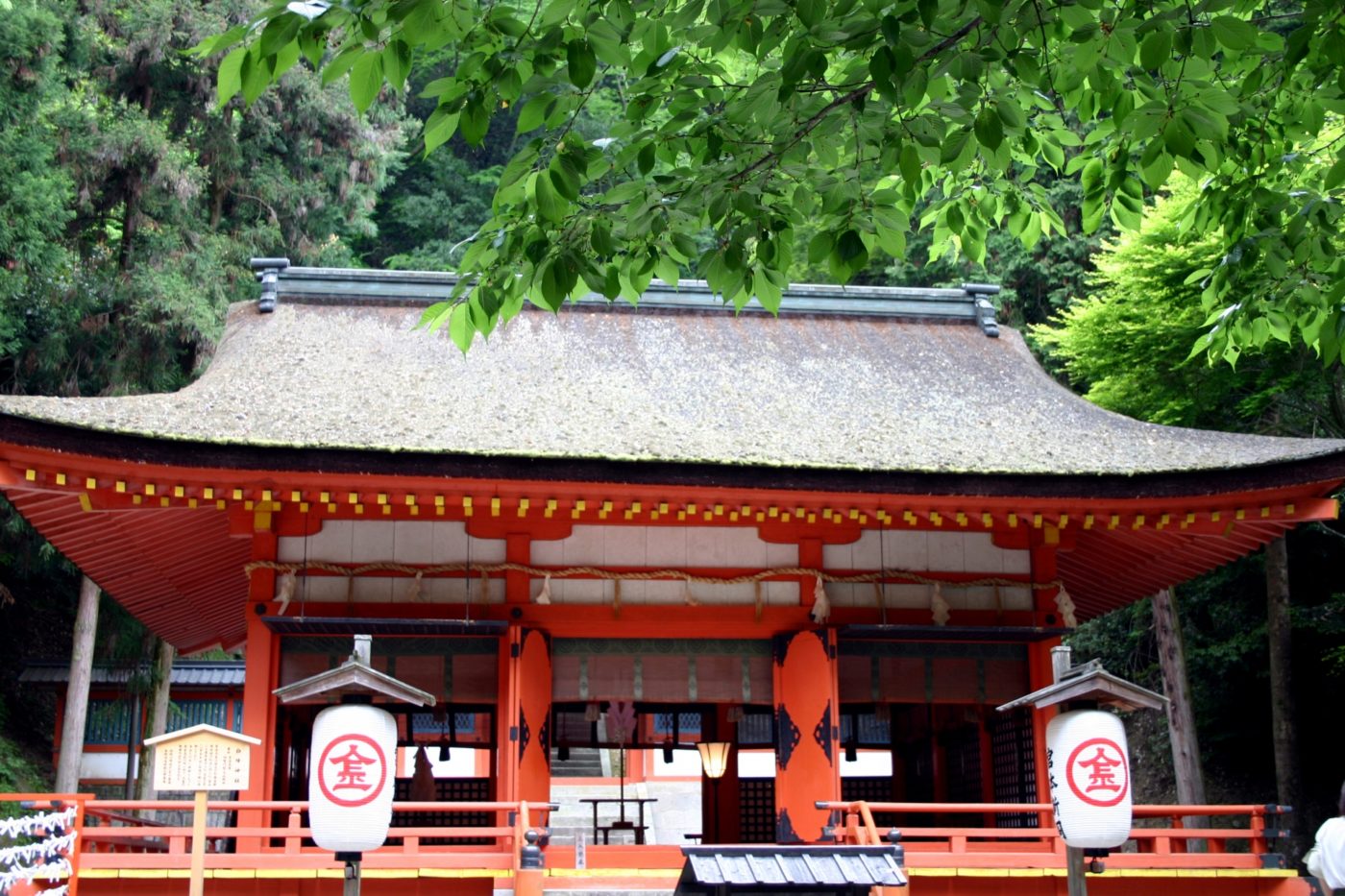
You can head from between the main shrine and the observatory, but it takes 583 more round trips to the back shrine, and it takes more than 1 hour round trip, so if you want to challenge, challenge after consulting your physical strength and time.
Fun after worship, walk in Monzen-cho
After worshiping, soothe your tiredness at souvenir shops and restaurants. Monzen-cho, also known as “Soft Cream Street”, has some unusual soft ice cream. Above all, “Kamatama Soft” is a dish that seems to be a udon prefecture. It mimics kamama udon, soft cream is a finely squeezed udon style, seasoned with a sweet and ginger flavor, and topped with chopped green onions.
Shop information
Shoyumame-Honpo
Address : 811 Kotohira-cho, Nakatado-gun, Kagawa Prefecture
Business hours : 10:00-17:00
No regular holiday
Tel : 0877-75-3788
A croquette is recommended for those who want to satisfy their stomach. A croquette handcrafted by the wife of the butcher “Hiraoka Butcher” at the entrance of the Kotohira shopping street is a unique dish of wrapping minced meat with mashed potatoes. It is a popular store that sells as many as 3,000 a day. Another popular item is the spicy minced cutlet.
Shop Information
Hiraoka Butcher
Address : 220 Kotohira-cho, Nakatado-gun, Kagawa
Business hours : 8:00-18:00
Regular Holidays : Wednesday (Open on public holidays)
Tel : 0877-75-3866
Summary
About 1 hour round trip to Gohongu, 785 steps of stone steps, Konpira has a mysterious power to climb the long steps. And the sense of accomplishment and exhilaration when climbing up is tremendous, and if you worship, you will feel grateful.
Come and experience the charm of “Kompira mairi” that has been popular with many people for a long time.
Information
Konpira Shrine
Address ; 892-1 Kotohira-cho, Nakatado-gun, Kagawa
Tel : 0877-75-2121
Web site : http://www.konpira.or.jp/
Visiting time: Gohongu / 6: 00-17: 00 (varies by season) Okusha / 8:00-17:00
Access :
[By train]
20 minutes on foot from Kotohira Station on the JR Dosan Main Line (60 minutes by direct express via JR Okayama Station via the Seto-Ohashi Line) 15 minutes on foot from Kotohira Station on the Takamatsu Kotohira Electric Railway Co., Ltd.
[By car]
30 minutes from Sakaide IC on the Seto Chuo Expressway
15 minutes from Zentsuji IC on the Shikoku Expressway

